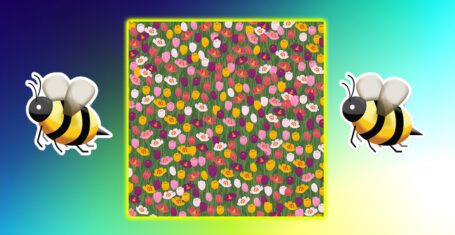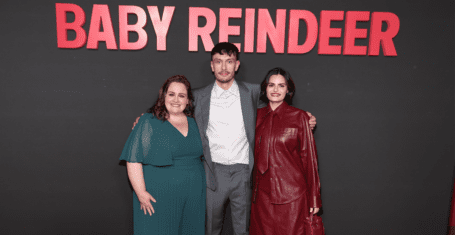
‘Art persists’: Ben Zombory-Moldovan on moving an art exhibition into the digital realm
From virtual exhibitions to funding for art provision, the Tab speaks to the co-president of this years Queens’ Arts Festival
I meet Ben outside the Round Church, for a bit of daily exercise. When I arrive, I find him leaning nonchalantly against the wall beside his bike, wearing a bright patterned shirt over a navy polo neck, with coordinated necklace and earrings. If I did not already know what he looked like, I somehow feel that it wouldn’t be difficult to spot this year’s Co-President of the Queens’ Arts Festival (QAF) amongst the many crowded around Bould Brothers (or, as I like to call it, the Pret queue 2.0).
We chat about everything from the challenges QAF has faced this year, to the general availability of art to students in Cambridge, to Ben’s own art background.
What is the Queens’ Arts Festival?
I begin by asking him what the Queens’ Arts Festival actually is. He tells me it’s an annual festival, in which students get the opportunity to show their work. “It’s not Uni of Cam specific,” he says, but rather includes ARU and even the Cambridge School of Visual and Performing Arts. The festival itself is very varied; he tells me that, “it’s got video art and performance and fine art and 2D art and sculpture,” and the committee itself usually puts on other events as well as the festival itself. Last year, this consisted of a drag performance night, a panel and an open mic night.
I ask him how submitting to the festival works, and he tells me that, “there’s a google form where you submit your art, and then we’ve got a team of curators who will go through everything and figure out what fits the festival, what fits the theme, and then in a very tight turnaround we’ll contact you and let you know if you got in.” Sounds simple enough, but obviously this year is a little bit more complicated.
“It’s been tricky trying to work out what to do this year”
“We’re going to need high quality photos of the artwork this year because it’s all digital,” he tells me, and naturally our conversation moves on to how on earth you organise an arts festival in the middle of a pandemic. The first challenge apparently came from the college itself: “Queens’ has decided not to let anyone in from outside of college,” a rather big problem considering that the exhibition space is on college grounds.
So, the QAF committee then planned an art trail, which would involve putting students’ artwork up in cafés around Cambridge so that those who couldn’t enter Queens’ itself, due to the college’s restrictions, would still be able to see some of the art. “Even in lockdown people could walk around Cambridge and see the work,” says Ben, but what they didn’t plan for is the lack of students back in Cambridge this term. They’re still planning the art trail but for Easter term, which Ben hopes will be “a great way for people not in the know about the festival to discover it.”
They also had an arts night planned, with “a series of outdoor performances and spoken word stuff and short theatre and readings and live music” but admits that this was “one of the first things to go,” as it would have required Cambridge to be in Tier 1 or Tier 2. Again, though, the committee is adapting, this time by moving the arts night online sometime in early March.
With streamed live music, video work, discussions and masterclasses, you should definitely keep your eyes peeled for this one. Ben hopes the art night will encourage people to engage more actively with the art, describing it as “a chance to get people making and doing rather than just watching.”

Image credit: Queens’ Arts Festival via Facebook
Making a zine
Another plan the QAF committee has to get people “making and doing” is a zine. “You should be able to buy the zine physically,” Ben says, “and it will be interactive, there’ll be activities in it to get you involved with making the art itself when otherwise you can’t see it.” The zine should also, he hopes, help fund the festival, as they’ll sell it to the general public.
Virtual exhibitions as “a different way to present art”
The most central part of QAF is the exhibition, which this year will happen virtually. I was really intrigued to know how a virtual exhibition might function. Ben tells me about how digital exhibition software is in its infancy, but that there’s lots of different types, including a “Google Maps style” software where you can explore the gallery at your own pace, and another which operates more like a video game, where you have an avatar and can interact with other people. To me, this second version sounded like Club Penguin but for the art world, aka amazing fun.
QAF have opted for something different though: “our software creates a virtual gallery in video format, so you watch it and with a series of camera shots it will pan through the gallery, maybe with some music or interviews over the top.” An interesting thing about this virtual alternative to having an in-person exhibition is the amount of control the curators now have over how the artwork is seen.
He gives me a list of all the different aspects of the online exhibition they can control: “you can scale the artwork and choose frames and change the lighting and move things around on the walls”, in a manner which is much more fluid than, as Ben so graciously puts it, “hammering nails into the wall.”
He speaks of how virtual exhibitions are about making a decision as to whether you want to emulate a real life gallery, or embrace the virtual form as a different medium and make the most of “the qualities and interest to it that you wouldn’t get in a physical space.”

An example of what the virtual exhibition space might look like. (Image credit: Animal Vegetable Mineral via Ben Zombory-Moldovan)
Too much control?
The added control the curators now have is also something Ben is wary of, though. “We’re going to have to work out how to present the work without putting undue emphasis on one piece, and how to create transitions and relationships between the work.” He says that, “in some ways I think it gives us too much power, because part of the joy of going to see the artwork is controlling how you see it, so it’s interesting that we’re controlling that instead. You’ve got to be quite careful about how you do it.”
Art as “a mode of escapism”
After chatting through the logistics of QAF this year, Ben tells me a bit about his own personal relationship to his art. “My art is a mode of escapism, rather than a means of processing the world. I do it for myself, and so it’s avoided engaging too strongly with the pandemic.”
He tells me about how he has turned to art as a form of relaxation over the past year, and a way to feel some sense of control in a world where it feels like we have very little autonomy over anything in our lives. He thinks that when making art, “you can create a world that isn’t the one outside, or is a world that you want, or is a world that’s a reflection of what’s outside. It’s nice to finally have control over something.”
For Ben, his art is currently mainly consisting of mono-printing and painting, but he encourages anyone and everyone to try making something: “it’s quite a nice way to fill time and feel productive and relaxed. If anyone has time, I’d recommend just making something – it helps release all the tension at the moment.” His belief that “art can offer people a way out” is something he hopes will translate into the Queens’ Arts Festival exhibition as well.

Image credit: Ella Gold
“The thing that’s lacking is money”
I wanted to find out a bit more about Ben’s experience of being a student artist in Cambridge. The first thing he pointed out was that “there’s not a particularly well-established art scene.” As someone involved in student theatre, I was wondering why the art scene appears to be so much less visible or established than the theatre scene. Ben thought this was mostly a funding problem: “it’d be fabulous if there was some kind of university studio somewhere,” he says. “I think you could have an exhibition space and a workshop in the same way there is with the ADC, but there isn’t the funding for it and it’s harder to make money in that way, because you can’t have a performance every night.”
As well as funding for large-scale exhibitions and studios, Ben talks about the lack of funding for art materials themselves, and how this discourages people from creating. “There’s no access to materials and paints beyond what people can buy for themselves, which I think is the other thing that would enable people to do it, because it’s quite expensive buying all that stuff.” He tells me that this lack of good quality materials affects the success of the temporary events too. “The temporary events are fabulous,” he says, “but they can only afford to get cheap acrylic paints or cheap pens or cheap brushes and really that doesn’t encourage people to keep making. There’s a joy to using good quality materials, so unless there’s a pool of resources it’s quite hard.”
“A lot of people are making work in their bedrooms”
As well as a lack of funding, Ben pointed out a lack of workshop space as a major issue. “There’s no space where you can go down and just produce work in a sustained way.” When in a studio, he tells me how “you can produce as much as you want because you’ve got the space and you’ve got the materials and, most importantly, you’ve got the people around you who are also making, who you can feed off of and take inspiration from and talk to about your work. I think that’s lacking here.”
The need to be around other people is something he also expressed finding exciting on the opening night of the festival last year. “What I realised at the exhibition last year is that art can be this communal event, it can bring people together in a way that’s quite rare for art in Cambridge.”

Image credit: Queens’ Arts Festival via Facebook
Community from a distance
Perhaps this realisation of the need for connection is what led Ben and co-president Emily Symington to choose the theme for this year’s festival as ‘Community’. “The interesting thing is working out how to create a sense of community when we can’t have people in the same physical space. It’s about an attempt to bring people together even if they’re across the world,” he tells me.
He also seemed positive about the power of the pandemic to increase that sense of community, and create more of the art spaces in Cambridge which are currently lacking. “The pandemic is giving people the chance to think about trying to create those spaces, and so maybe when we come back there’ll be renewed effort and vigour about that.” He mentioned some Facebook groups that have been set up recently by artists in Cambridge in an attempt to foster that desire for community.
Ben predicts other positives for the art world coming out of the pandemic, such as more creativity in curation and also accessibility in seeing art. “We’re having to rethink how we show art, about ways we can expand it and how we can engage more people.” He believes there are some positives to digital galleries: “otherwise art is exclusively in museums, which are tricky spaces to navigate and inaccessible to many people and actually having things online – if they’re done in the spirit of openness – is a really interesting way of getting more people to engage with the work.”
“We need your submissions!”
Finally, I asked Ben for some quick advice for anyone thinking about submitting their work to the Queens’ Arts Festival, but unsure where to start. “To be honest, just have a go,” he says. “As with so many things here, if it seems a bit scary it’s really not, it’s just other students running it and we really want to show your work.”
He also mentioned that they’re looking for writing on the theme of community as well as art this year too, whether that be in the form of a play, a short essay, a poem, or something else.
In a world of seemingly endless cancellations, there’s something quite special about this virtual Queens’ Arts Festival, which c*vid can’t touch. It’s looking to be a very exciting event, and you’d be a fool to miss it.
You can submit your work for the digital festival here – applications close on February 13th.
Feature image credit: Queens’ Arts Festival via Facebook and Ella Gold









































